by Adam Chase | Jun 15, 2022
Chances are you’re familiar with the standard wine grape varieties: Cabernet Sauvignon, Chardonnay, Syrah, Pinot Grigio, and the rest. These staples have been used to create fantastic wines for hundreds and hundreds of years, many with their own legendary origin stories. However, what you may not be familiar with is the surge of new grape varieties that have been developed within the last 100 years, with new ones coming along every year.
Across the US research facilities have been working to create grape varieties that can be used to create high-quality wines and be tolerant of disease, pests, and difficult weather. By experimenting with traditional grape species from Europe, ex: vitis vinifera, and native North American species, ex: vitis labrusca, researchers at institutions such as Cornell University, the University of Minnesota, University of California at Davis, and the University of Florida are pushing the boundaries associated with traditional grape varieties, and the wines that can be made from them. Cornell University has the longest tradition of creating new grape varieties, with their efforts extending back to 1888, producing over 60, and setting the groundwork for this pioneering field of research.
Each new variety created is called either a ‘hybrid’ or a ‘cross’, depending on how they are made. A hybrid is a new variety made by breeding two grapes of different species, whereas a Cross is a new variety made by breeding two varieties of grapes within the same species. This gets especially complex when additional species of grapes are introduced, such as the new hybrid created at UC Davis using the European species vitis vinifera with a species native to the American South-West vitis arizonica. This 20 year long venture culminated in 2020 with the creation of five new grape varieties, all designed to be more sustainable and resistant to temperature fluctuations and increases in disease due to climate change.
With all of that in mind, let’s dive into some of the more popular creations you might come across!
Reds
Chambourcin: Originally developed in France in 1963, Chambourcin grapes are a French-American hybrid designed to be resistant to humidity and disease, and be able to grow abundantly in both cooler and warmer climates. Wines made from this teinturier (‘red fleshed’) grape are strong in flavor, with moderate tannins and high acidity. It has rich flavors of black cherry and red plum, with green herbaceous notes and black pepper on the finish. It is usually oaked to soften the acidity and is often served chilled due to its vigorous flavor.
Frontenac (A.k.a. Frontenac Noir): Developed in 1978 by the University of Minnesota, this hybrid was designed to be extremely cold hardy, as well as resistant to diseases such as powdery mildew and botrytis. Wines made from Frontenac often have low tannins and high acid, with the grapes naturally high sugar level resulting in an elevated alcohol level in the finished wine. It has ripe red cherry and red currant flavors, with warm baking spice, sweet tobacco, and chocolate notes on oaked versions.
Whites
Traminette: This cross was first created in 1965 at the University of Illinois Urbana-Champaign and was further cultivated by the New York State Agricultural Experiment Station grape breeding program at Cornell. Traminette is extremely cold resistant, even more so than its parent grape Gewürztraminer, and is also partially resistant to several fungal diseases. It is grown across the country and has found a special home in the Finger Lakes AVA of New York, resulting in wines that range from dry to sweet, with floral and spicy notes on the palate.
Cayuga White: This hybrid was created at Cornell University and was first planted in 1945 on the northern edge of Seneca Lake in the Finger Lakes region. Its parent grapes are Schuyler, a table grape, and Seyval Blanc, itself a French-American hybrid often used in the creation of new grape varieties. Cayuga was designed to be disease and cold resistant, although its greatest strengths are its high yields and ease of wine production. Wines made from Cayuga White can be either still or sparkling, with crisp green apple notes in cooler climates, and ripe stone fruit notes in warmer climates.
We encourage you to search out some of these wines especially if you travel to New York’s wine regions!
Check out our partner in New England where this post originated Commonwealth Wine Schoo: https://www.commonwealthwineschool.com
by Adam Chase | Sep 12, 2021
In light of our exciting news regarding the merger between Grape Experience’s East Coast WSET operations and Commonwealth Wine School (CWS) in Cambridge, MA, we caught up with CWS founder and director Jessica Sculley. In this interview, we learn about Jessica’s extensive background in education and how she’s applied it, coupled with an innovative approach, in building one of the Greater Boston Area’s leading wine schools.
You founded Commonwealth Wine School after a long career as a math and science teacher. What made you transition to the wine world?
Although wine was always on the table when I was growing up—pretty typical for an Italian family—I wasn’t hooked until the age of 17, when I visited a friend in Montalcino in Tuscany (the legal drinking age then was 16 in Italy). I was completely entranced. Maybe it was the old farmhouse on the Tuscan hillside, and the delicious food, but the wine brought out flavors (and no doubt some intoxication) that I hadn’t expected. I wanted to learn more.
After college and grad school I began my career as a math and science teacher, tasting good wines when I could, reading a bit here and there, but otherwise unable to find the time or the funds to study wine more intensively. I found the first WSET Level 1 course ever to be offered in Pittsburgh at a local wine shop and completed the rest of the WSET wine certifications with Grape Experience. I then left the classroom and began teaching classes for Grape Experience.
In fall 2019, the time seemed right to join the spectacular educators and renowned schools for wine education in one place. With the support of fellow educators, I signed the lease on our Harvard Square location in February 2020.
How did you adapt your approach as an educator to WSET courses? How did you develop your wine skills?
Though teaching math and teaching about wine may seem unrelated, they’re not. In all areas of education, it’s necessary to engage students so that they have a stake in the subject they are learning about—it’s not just about exam results.
As teachers we have options: we can present information and tell students to memorize it or we can lay the groundwork of understanding by presenting information, encouraging active participation, problem solving, and interacting with each other as well as with the subject. The WSET curriculum is well suited to this kind of educational structure.
My own wine skills were developed slowly, and are still being developed! When I was focused on training my palate early on, I would go into the grocery store and stick my nose into every bit of produce, and into the bulk spice racks (of course we can’t do this now). I’d make flash cards for myself when I needed to remember facts or figures that wouldn’t register any other way. But the most important thing that I did, and that I still do, is teach. I think that teaching is one of the best ways to learn anything. There’s nothing like researching, organizing and gathering thoughts to create a presentable story to other people to help you learn a topic.
Commonwealth Wine School’s faculty and staff consist of an impressive list of highly respected wine professionals. In your view, what are the traits that make for great WSET educators?
I feel so grateful to be part of the incredible group of scholars and educators that we have at Commonwealth Wine School. As I mentioned before, it’s not enough to just know the material to be a great WSET educator, you have to be able to explain something from several different perspectives. You must ask students questions that allow them to make their own connections and build their own knowledge base. Above all it’s important to create a safe learning environment where everyone feels comfortable asking questions and sharing their thoughts.
The pandemic has required that schools all over the world change how they deliver curriculum to their students. What are some ways that CWS has done this? What has worked and what hasn’t?
The most obvious change was going virtual during the initial stages of the pandemic through Zoom courses. When we finally opened our doors in Harvard Square, we invested in a SWIVL robot in order to teach concurrently in person and virtually. This allows us to present a live class to a group in our classroom, while also allowing students to tune in from home and participate interactively with the class. This is a technology that we are still perfecting since it’s clear the hybrid learning format is here to stay.
Then there’s tasting together – a really important part of wine education. Last October we began creating sample tasting kits for students to pick up and taste along at home. Now we work with a certified wine shipper to deliver these sample kits to students around the country to taste along with classes. Creating these kits are time consuming and expensive, and ensuring they stay fresh and ship well has taken a lot of experimentation. Still, they offer a solution for when we’re not able to taste together in person.
In the classroom, we ask everyone to wear masks while not actively tasting. All of our faculty and students must now also be fully vaccinated. My main goal is to keep everyone healthy and we will continue operating in a way that is in the best interest of public health, whatever that may be.
I’m sure we will see more e-learning modules, which we will be rolling out this fall. These will be for students who want to learn about wine, but have to do it on their own schedule. Stay tuned!
If you had to pick wines from only wine region to take to a desert island, which one?
In the end, I really am a devotee of Burgundian wines … I think that the Chardonnays and the Pinot Noirs from this little slice of France will suit me fine (assuming I’ve got good producers and vintages with me!). If I’m lucky, I’ll have some Crémant de Bourgogne to celebrate when I’m rescued.
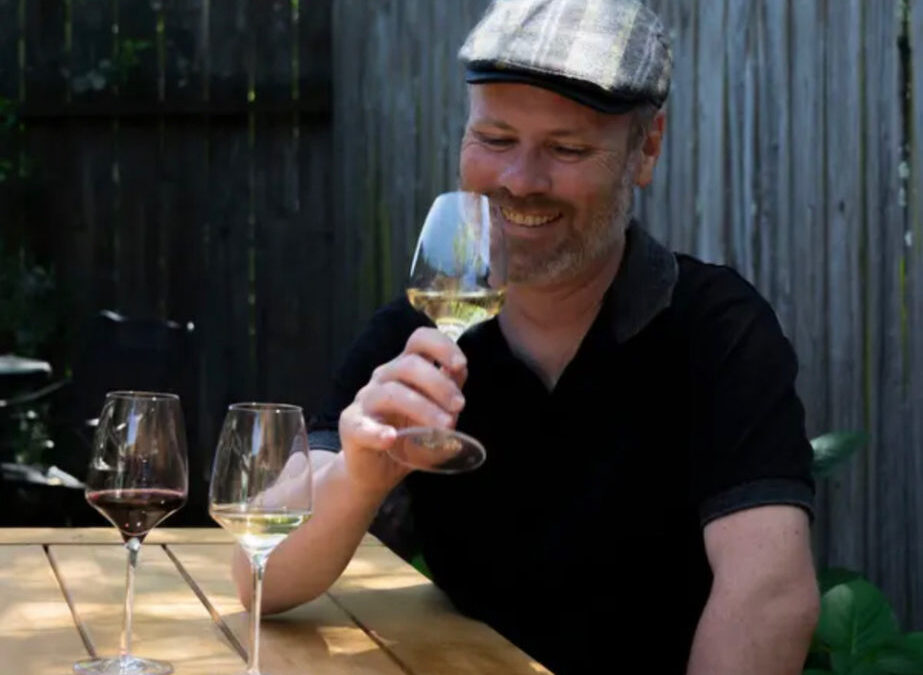
by Adam Chase | May 16, 2021
It’s official, Grape Experience is now offering in-person classes in both Boston and San Francisco (check out the website to see upcoming courses and enrollment deadlines). Since it’s been a while since we’ve seen each other face to face, we decided to catch up with a few of Grape Experience’s instructors and reintroduce them to our wine-loving community. First up is WSET Certified Educator Matthew Gaughan, who has helped us kick off our in-person classes.
Rest assured, we are taking every precaution to guarantee the safety and well-being of students and educators. We hope to see you at a class soon; meanwhile, read below to learn more about Matthew:
What brought you into the wine industry?
I’ve always enjoyed drinking wine, but it was more for pleasure until I started asking myself why I liked one wine more than another or what the difference was between Merlot and Cabernet Sauvignon. So, I took an introductory wine course, then the WSET levels 1 and 2. As I became more and more fascinated by the world of wine, I thought I should my learning to use and got a part-time job at hangingditch wine merchants in Manchester and I’ve never looked back.
What is it that fascinates you about wine?
Wine is a window into so many varied corners of the world: biology, chemistry, geology, history, literature, trade, business, retail. (If wine had been part of our science classes at school I would have done a lot better…). And, of course, wine is social—I’ve met so many amazing people around the world because of wine.
Tell us about your education background.
I first started teaching English as a foreign language (TEFL) in Dublin after I finished my Master’s degree. Then I moved to Madrid to teach there before moving back to the UK to do my PhD in English Literature at York, where I also taught undergraduates. When I moved into the wine industry, it was natural for me to study wine and teach about what I had learned.
Why should students take WSET courses?
Whether you’re in the trade or not, if you have a genuine enthusiasm for wine then WSET courses are clear, concise learning tools to gain knowledge about wine—and you take that knowledge with into your everyday social conversations or into your job. For some people, Level 2 is as much knowledge as they want or need; for others (like me) the WSET can take you further with the all-encompassing Diploma. Another reason to take the courses is that you can meet some awesome people who have lots of stories to tell.
And what do you do when not teaching for Grape Experience?
I’ve started an online wine club called blackpoolmatt’s wine club—Eric Asimov recently featured it the New York Timeswhich was pretty exciting. I bring an educational aspect to the club, with notes on each wine about the people, the place, and the winemaking. There’s also a specific club for wine students, where I send out blind tastings according to which exam they’re taking.
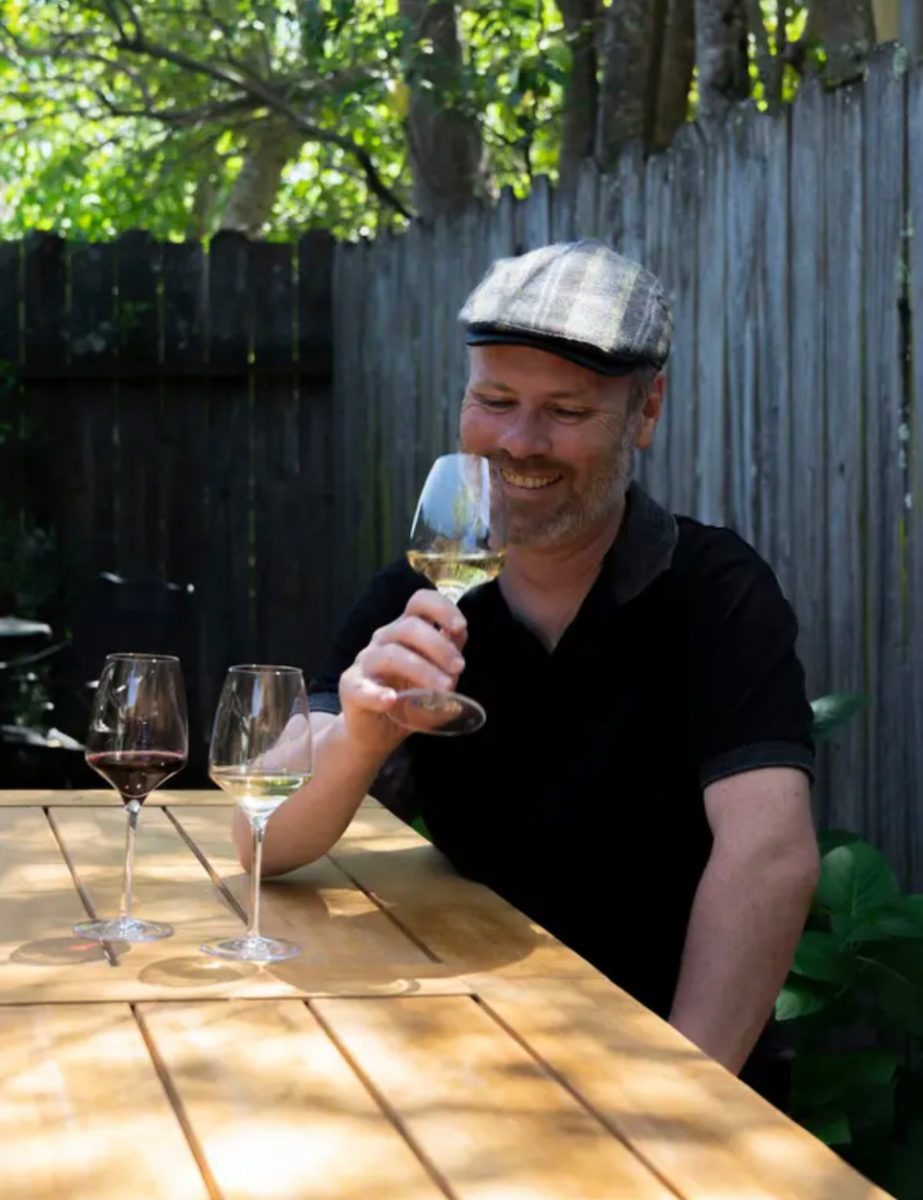
Favorite Grape?
Mourvèdre.
Favorite Region?
Jerez (Sherry – Xérès). Yes, I’m British.
When you’re able to travel again, which is the first region you’ll visit?
Well, the last place I was supposed to visit was Germany so I should resume my travels there.
Desert island wine?
Given it’s a remote, small island, let’s say Madeira!
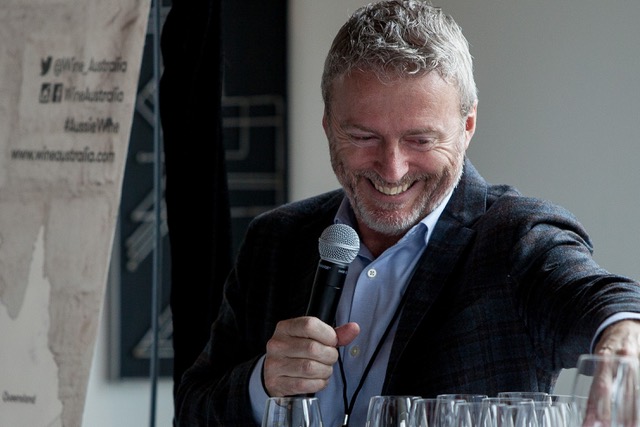
by Adam Chase | Feb 2, 2021
The Land Down Under, Oz, Australia … however you refer to it, this is a continent/country with an incredibly varied winemaking history and culture, but one that too often gets pigeon-holed as solely producing big, high-alcohol wines.

Mark Davidson, Head of Education Development – Americas for Wine Australia
We sat down with Mark Davidson, Head of Education Development – Americas for Wine Australia (and who also happens to be a Grape Experience educator) to chat about what’s happening in Australia’s wine scene right now and how the WSET helps change consumer understanding of the wines.
How have perceptions of Australian wine changed in the USA over the last ten years?
There’s been a big shift over that last 10 years, and more particularly in the last 2-3 years. Before, the perception was quite negative and one dimensional across all levels of the supply chain. Now we are seeing that there’s a much better understanding of the diversity of wine styles and this has resulted in a renewed interest. On-trade are keen to bring on more wines and have been more receptive and actively seeking out Australian wines and distributors. We also have more importers looking at diversifying their books and bringing in different styles and varieties.
How have you been educating consumers/trade during Covid times?
We have been partnering with wine schools and other educational bodies to host webinars, we’ve ramped up our distributor training sessions, and we’re working on various media campaigns.
Our online learning platform has also been a real hit: Australian Wine Discovered (www.australianwinediscovered.com). This is a free site with a plethora of downloadable, editable resources that has been a game changer in terms of directing people to access a curated, reliable source of information.
We are also about to launch a campaign called “Far From Ordinary.” More on this in the next few weeks.
What undiscovered Australian wines (not necessarily brands, but regions and styles) should Americans know about that they don’t? What are the Australian wine regions on the rise that we should watch?
So many! I think there is generally a better understanding of the classic varieties and styles. There are many exciting and contemporary regional stories right now, but I think that what is going on with southern Mediterranean varieties in McLaren Vale and Riverland is very cool: Fiano, Vermentino, Nero d’Avola, and Montepulciano are all really showing themselves to be ideally suited to the environment, and the best examples are showing a lovely freshness and vitality.
How do WSET courses help promote Australian wine?
From the start, WSET has always provided a solid foundation in Australian wine. Getting those basics sorted early in your wine education helps avoid stereotypes that can develop – and that’s true of all countries and regions.
WSET students have to learn about Sparkling Shiraz: tell us why.
Because it is unique and lip-smackingly delicious! It is a historic style and while it can take people off guard initially, Sparkling Shiraz is incredible food friendly. Brilliant with Peking Duck, awesome on the Thanksgiving or Christmas table and remarkably good with Eggs Benedict. (That’s a personal story for another time….)
If you had to pick one region in Australia to take to a desert island, which one?
Yikes! That’s tough. Tasmania. That way I could drink world class bubbles, Pinot, and Chardonnay all day long. And in the unlikely event that those got boring, there’s delicious Riesling, Sauvignon Blanc, and Gamay.
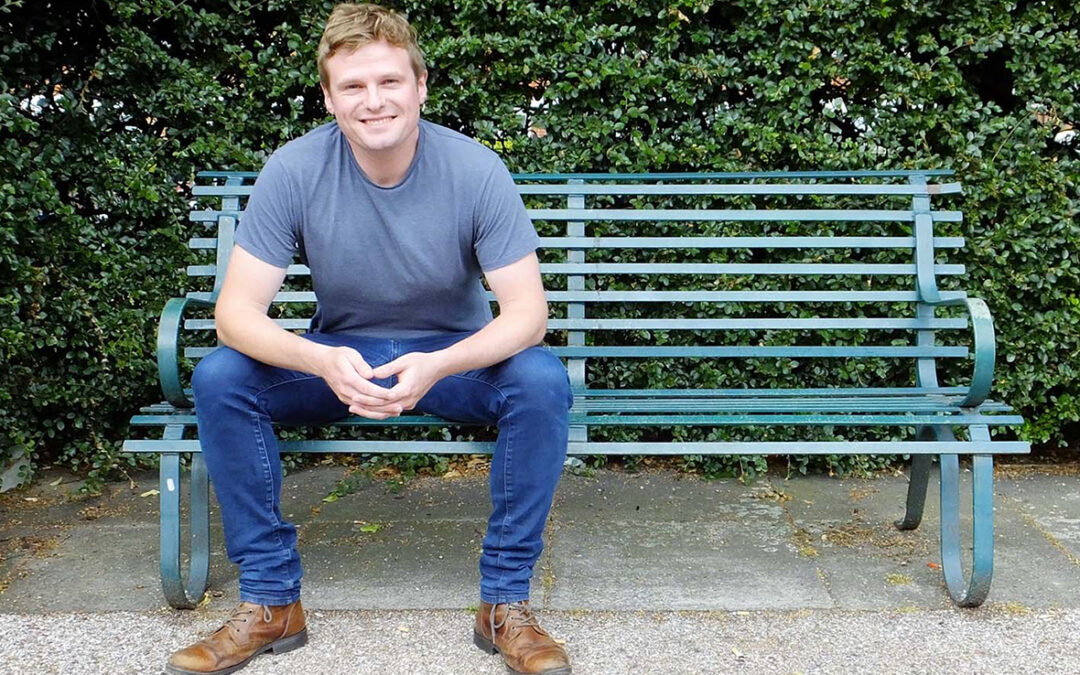
by Adam Chase | Oct 18, 2020
Q&A with Jim Gore, DipWSET and Founder of the Global Wine Academy
As one advances through the WSET courses, culminating in the Level 4 Diploma and opening the door for aspiring candidates to pursue the Master of Wine, the curriculum becomes less exact. At the Diploma level, students are expected to create their own study plan to complement the WSET curriculum in order to pass the exams. Candidates for the MW program must go one step further, developing entirely independent study plans that guide their course of study for one of the most rigorous wine exams. Luckily, there are organizations who can help.
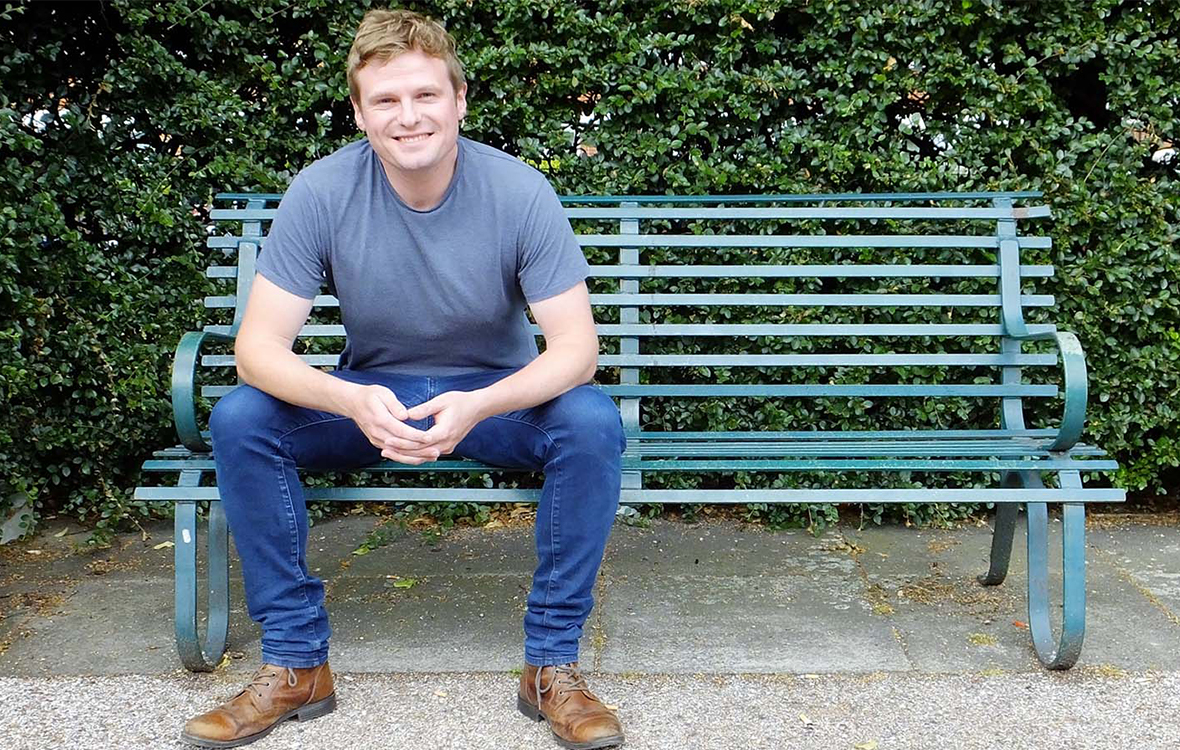
Jim Gore of Global Wine Academy
Global Wine Academy (GWA), founded by Jim Gore, DipWSET is one such entity that operates on a global scale. We got to sit down with Jim to talk about GWA and about the changing landscape of wine education.
GE: What inspired you to start the Global Wine Academy? What was the initial aim? Now a couple of years in, has that aim shifted at all?
JG: I wanted a change in lifestyle first and foremost – more flexibility. I also wanted to see what the world of wine education was like outside of WSET School London.
The program has changed monumentally over the past few years, particularly the last few months where we have gone completely online. This has allowed me to teach students who study outside of the UK or are studying online. I feel I’m now addicted to the variety and diversity this style of education offers and love getting to know new students so much that even when we do go back in the classroom, I think that will only be a minor part of my business.
GE: From your perspective, do students’ needs differ according to which wine program or level they are enrolled in e.g. WSET vs. MW, WSET Level 3 vs. Diploma)? How so, and how does the Global Wine Academy tailor their offerings to meet their specific needs?
JG: There is a genuine simple thread across all of the courses that we run: we look to build skills in students rather than give them answers. With that in mind, every course or session we run is split up into manageable chunks that are then worked on session after session, building long-lasting and transferable skills as we go.
The courses are always based around the assessment criteria for each qualification rather than the ‘topics.’ For example, our Online Theory Course runs in partnership with Enjoy Discovering Wine (Diploma APP), who uses a concept called ‘Flipped learning’ where we get the students to study and research in their own time and then we work on the more difficult skills together as a group. Too often you find that lectures are just visual versions of the textbook and the hardest skills to refine (analysis, application, and evaluation) are tested simply through mock exams. We have a strong view that as educators we must guide students through these difficult parts.
The MW tastings that we offer (and our online version that we are soon to be launching) focuses on the same process: we train the students how to answer the questions correctly and accurately. Feedback is essential and something we have been experimenting with through our courses. Students will often get to see each other’s feedback as well as different versions of how to answer the same question. The higher-level qualifications by nature offer many different ways of answering a question so facilitating an environment where students can share and continue to learn once they have left the course is essential. A full understanding of the feedback system is essential; we like to turn our students into mini-educators who are confident enough to spot mistakes in the work of others.
GE: How have you adapted programming since Covid-19 hit back in March? Will some of these changes continue even as markets open back up, or do you hope that everything will go back to normal?
JG: We now use WhatsApp and Google Docs in many of our courses as communication tools and platforms for collaborative work. One of our Theory groups that included students from the UK, Spain, France, Italy, Hong Kong, Taiwan, Australia, and New Zealand have continued to meet each week and have formed a phenomenal post-course study group. We still keep an eye on them through Google Docs and on WhatsApp, but frankly they now have the skills to create questions themselves and test each other. We are thrilled with it.
We also now use a company to repackage wines in smaller formats so that students can taste at home.
GE: Looking at wine education overall, and many wine courses going virtual, do you think the structure will look a lot different in a post-Covid world? What schools/academies/organizations in your opinion have really done things right in coping with the current environment?
JG: 67 Pall Mall comes to mind as somewhere that has really cornered the market for wine tastings, charging a small fee to watch or treat yourself and order the wines along with some phenomenal speakers. It really is the palace for wine geeks on any budget.
There are so many examples of where it is done well and that is what I have been seeing mostly, but some places have not really understood the limitations of online. Too many institutions are running day-long courses with zero or no interactive elements. With the online platform, there are quiz functions, breakout rooms, and options to show videos and visuals more clearly and, most importantly, the ability to collaborate across different time-zones – so it is a shame when it is just a carbon copy of a classroom session.
GE: As the name suggests, the Global Wine Academy has international reach. Which countries do you currently offer your services in, and do you hope to expand into new markets in the future?
JG: We deliver wine to UK and Europe, but would love to experiment further abroad at some point. We have had some success with students ordering wines locally that are similar to the ones we taste. This isn’t perfect for fine-tuning calibration, but just as good for examination technique. This year we have had students from: UK, Sweden, Holland, France, Spain, Italy, Switzerland, Hong Kong, Taiwan, India, Australia, New Zealand, and both coasts of USA.
I’ve also adapted one of my courses working with AWSEC in Hong Kong where we have done tastings together virtually. That has been a great to reach new audiences through simple collaboration.
GE: Any other comments you would like to share?
JG: Our latest venture is the Instagram Live Calibration Wine Fair. 24 wines are shipped in small test tubes to students and we go through them all in one day! Many students watched and then ordered afterwards, others tasted along using the videos on IGTV over the course of a week. Moving forward, we are looking to expand this model over a couple of days, including some guest speakers. All the videos are available on our IGTV channel, along with some student-led calibration videos that we did over the summer.





